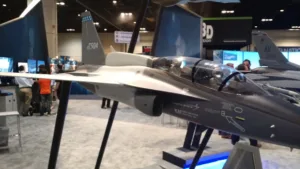At I/ITSEC 2016, which took place at the Orange County Convention Center in Orlando, Florida at the end of November and is the biggest North American show for training and simulation, we focused mainly on the display aspects of this event. That means mostly projection products but also AR/VR/MR applications as well.
Overall, there were not a lot of new technologies or products introduced at the show. The focus was more on improvements to existing platforms and application development – particularly in the AR/VR/MR space. However, vendors report that the market is strong with money available for simulation and training. Also, many expect this market to get better during the Trump administration as he has pledged to “rebuild the military” and training and simulation can be a very cost effective way to maintain readiness. This could very well include a bigger focus on AR/VR/MR.
This show is more about military simulation than commercial simulation and the big program grabbing the attention of companies is the TX aircraft program – the upgrade for the T-38 fast jet fighter. For this program, the simulation components are tied directly to the winner of the aircraft manufacturer. This type of bundling was first done on the F-35 program and is now continuing on the TX program. Boeing, Raytheon, Northrop Grumman and Lockheed Martin are all bidding as prime contractors on the airframe with various partners to provide the training and simulation aspects. The goal is to provide visual acuity of 20-25 in a 360-degree dome in a 12’ x 14’ (3.65m x 4.25m) space.
Lockheed Martin (photo shows their model of the aircraft) say they already have a operational aircraft in testing in North Carolina as their bid is based upon the T-38 replacement they designed and manufactured for the Korean Air Force earlier. The Boeing-Saab team says its T-X trainer should be ready to fly by the end of the year.
We also summarize an important panel discussion which included high ranking officers from all the major services in NATO and the DoD. All see huge benefits in simulation to improve readiness and increase proficiency. But there are many challenges like increasing the update rate to operational and simulation systems while balancing costs and cyber security. There is much more in the article on these and other aspects of training and education. – CC

